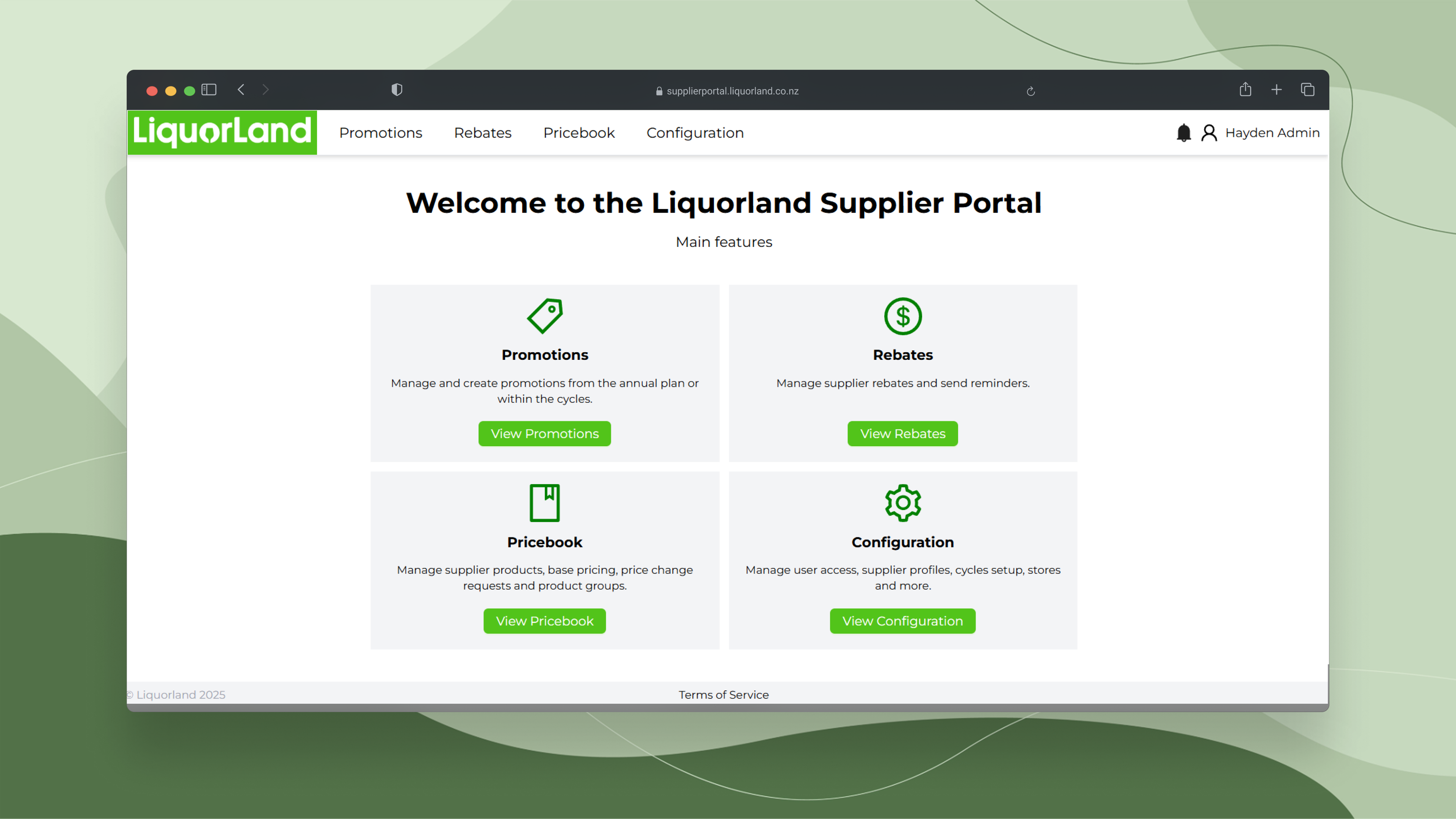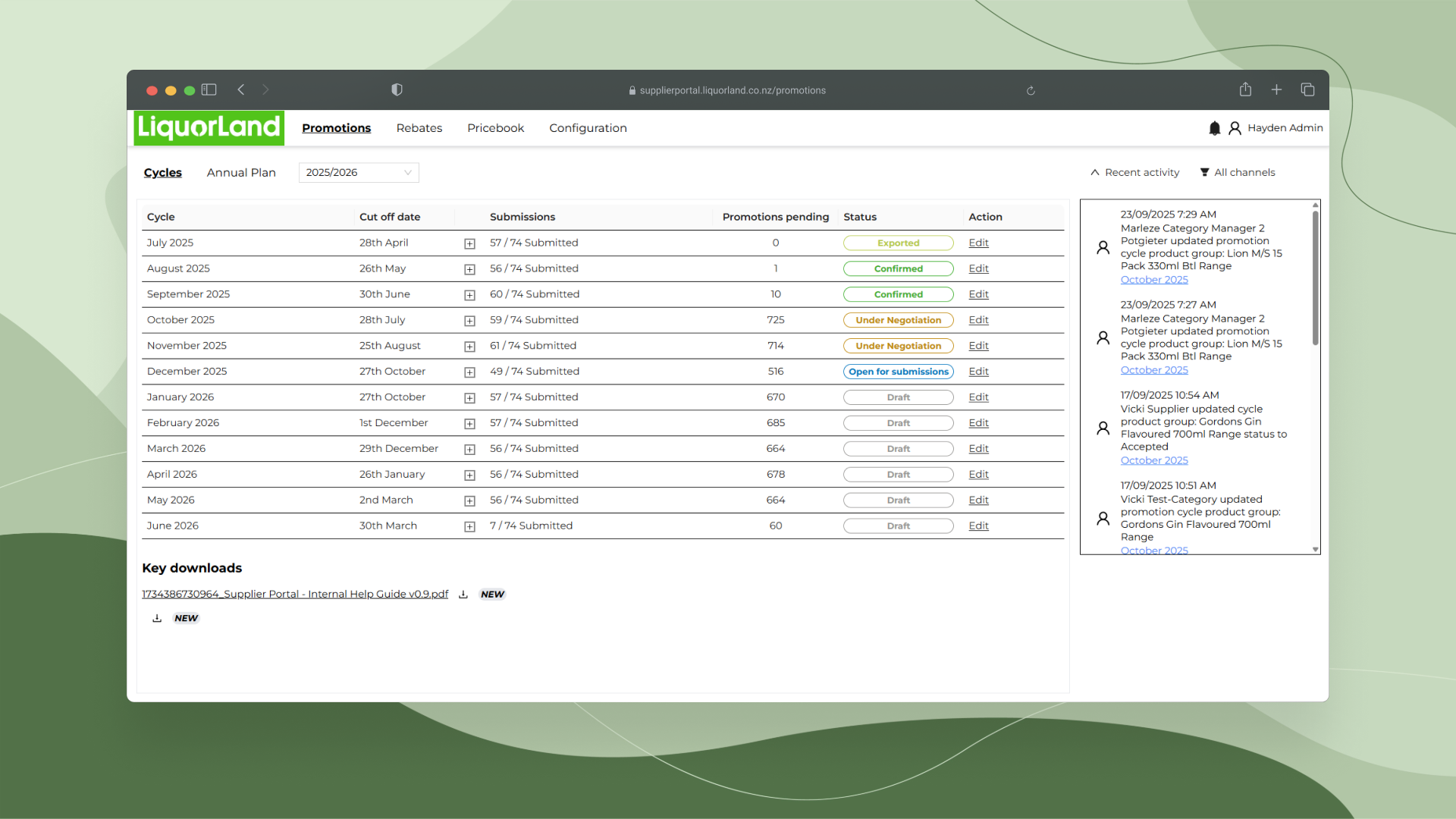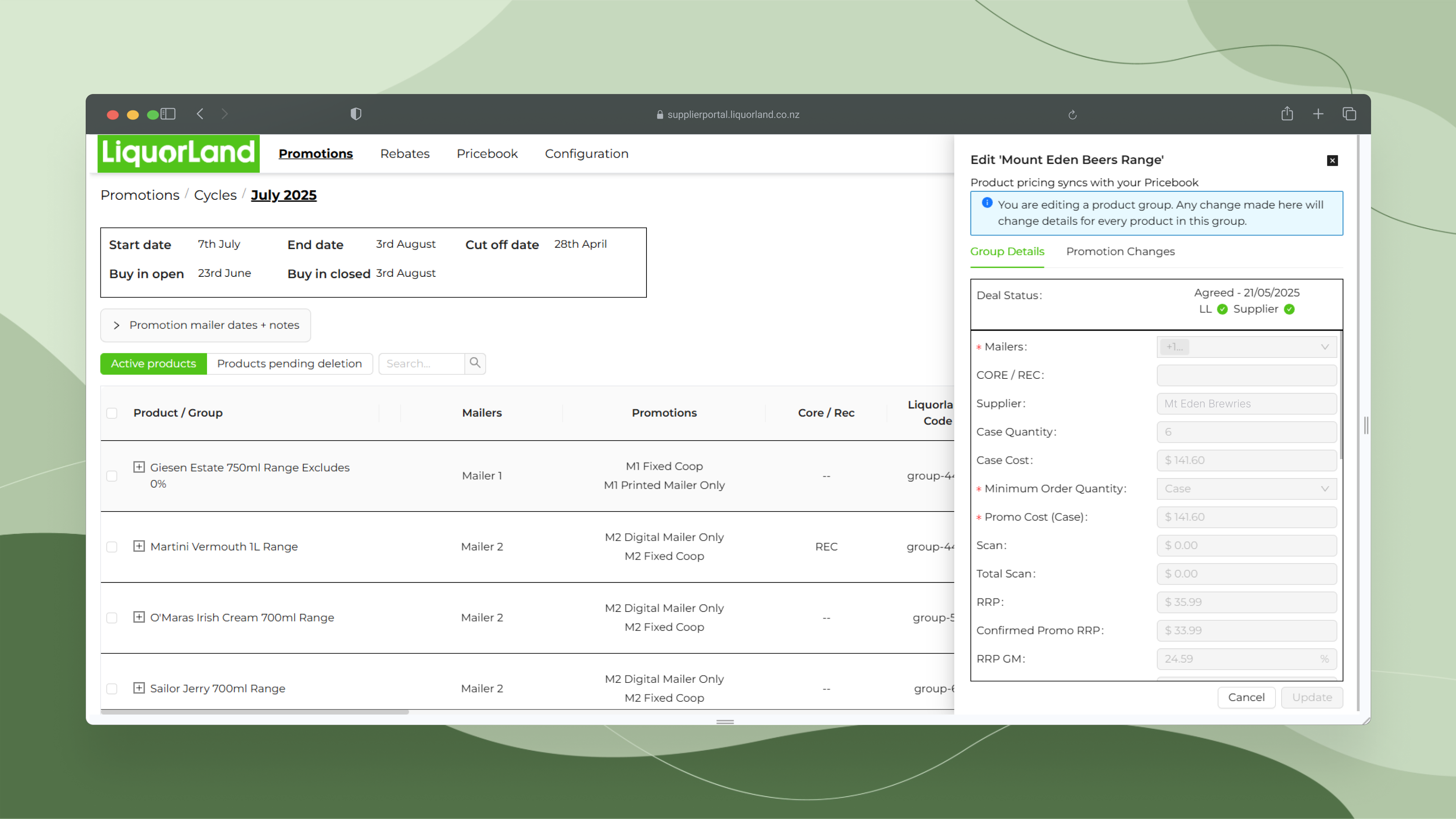Work
Liquorland's Supplier Portal
Custom Enterprise Application Design & Rollout
April 2023 - August 2025
Concepts/Prototyping
Technology production
Strategy/Management
My role: Project Lead / de facto Product Manager, UX lead

Summary
This has been one of the biggest projects of my career, high cost, long duration, and some of my greatest wins and challenges. The goal was to replace Liquorland’s spreadsheet-driven promotions and rebate process across 175 stores, 65 suppliers, and the Support Office. We set out to eliminate errors, stop last-minute changes, improve transparency, speed up workflows, and strengthen supplier and store relationships—while keeping pace with market expectations.
Business outcome
The portal replaced an error-ridden, insecure spreadsheet system with a robust platform that improved efficiency, transparency, and relationships across the Liquorland network. It reduced risk, sped up promotions, and gave stores and suppliers a single source of truth for rebates and deals.

Who else was involved: 3rd Party Development Agencies, Liquorland Category Managers, Liquorland Finance Team, Liquorland IT Team, UI/Animation Design (via Theta)
Background
Liquorland, a Foodstuffs NZ subsidiary, previously managed promotions through 150+ spreadsheets every month. Category Managers negotiated some 2,000 SKUs with suppliers over email, IT merged 65 supplier files into one POS feed, and Finance tracked performance with return spreadsheets. The process was error-prone, slow, insecure, and relied on fragile master sheets held together by SQL queries and vlookups.
The project kicked off once we established we could not use or customise a third-party tool for solving this problem including the Foodstuffs supplier portal.

Process
-
1. Business Case (6 months)
I partnered with Finance & IT Director to define the problem, map current state, align on KPIs, prototype new concept in Figma, and ran moderated supplier usability testing sessions. I produced 100+ wireframes, selected a design system, wrote user stories & acceptance criteria, process flows, ERD/DB concept, and a high-level system architecture. We then ran a tender process with three large development companies for the build.
-
2. MVP Build (8 months)
Acting as primary approver on all tickets and the interface to the Liquorland Support office, I refined requirements with developers, led testing, and subcontracted UI/animation work for polish and surprise and delight moments.
-
3. Supplier Pilot (2 months)
Tested with 6 supplier organisations in parallel with the old system. Gathered feedback, created help docs/videos, built backlog.
-
4. Full Rollout (4 months)
Took over CAPEX and OPEX budgets, rolled MVP into production to all remaining suppliers.
-
5. Version 1 Build (6 months + 4 months)
Designed and tested the store view with 12 pilot stores (6 months), then rolled out nationally to 160+ stores (4 months), scaling performance to handle 100+ concurrent users. We also onboarded a dedicated tester to support with releases.
Alan Jepsen (Category Manager & Project SME) talks through the experience of working on the project
Challenges
- Complex business rules, scenarios and legal requirements: The project involved navigating intricate supplier, pricing, and compliance frameworks, which made quality assurance challenging. To manage this, we developed detailed test cases internally and later brought in a dedicated tester to ensure full coverage and scalability of our testing process.
- Operationalisation and change management: Introducing a new supplier portal required significant behavioural change across teams who had used legacy systems for years. We ran structured onboarding sessions, weekly WIPs, and created comprehensive internal guides and training material to embed new processes. We also worked closely with the communications team to build engagement and excitement across the business.
- Scalability and performance: As the portal adoption grew, we needed to ensure performance under load. We engaged specialist testing support to conduct load and stress testing, and used this opportunity to upskill our internal testing capability for future releases.
- Design maturity and delivery timing: Balancing design evolution with ongoing delivery was a challenge, as the design system was still under development during the MVP phase. We prioritised stability and usability while progressively enhancing the visual layer post-launch. In future, ensuring design assets are production-ready before build would be a key learning applied early.
- Third-party dependencies: Development of the system was managed externally, which meant even small requests could take time to action. To keep delivery moving, we strengthened internal capability in data and troubleshooting, clarified communication channels, and created shared documentation so our team could progress work without waiting on third parties.
Tools used
Figma · Miro · Hand sketching · ClickUp · SQL · Vercel · Azure